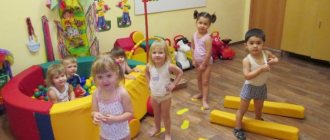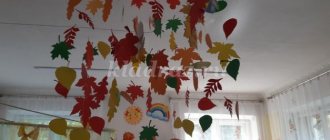Other ideas
Easter is a touching spring holiday. Spring is coming, the first flowers appear, the days become sunny and warm. A holy celebration is an excellent occasion to please your loved ones with an unusual souvenir made at home from improvised materials. Here are some more ideas for creativity with children of different ages:
- Toys made of wool using the felting method.
- Round frame with eggs and willow.
- Embroidery.
- Souvenirs using quilling technique.
- Testicles decorated with foam.
- Towels with inscriptions.
- Paper angels.
- A nest made of twigs.
- Egg herbal.
- Original coloring of eggs for Easter.
- Testicle sacs.
- Funny little animals.
- Clothes for testicles.
- Eggshell applique.
- Volumetric postcards.
- Application from napkins.
- Unusual bouquet of willow branches.
- Chickens made from pompoms.
- Testicles in beads.
- Kinder chickens.
DIY Easter crafts create a special atmosphere at home and lift the spirits of adults and children. And while working on their manufacture, you can tell your child about the history of the holiday and its traditions.
How to make an Easter chick from fondant
In order to make a figurine of a chicken hatched from an egg, you will need:
- Mastic. You need a lot of yellow, white, orange, as well as a little pink, purple and black mastic for the eyes and bow.
- A rolling pin and a thin sharp knife for working with the mass.
- Stack with large round tip.
- A toothpick for drawing out texture and working with fine details of the figure.
Sculpting process
The mastic chicken is molded in several stages:
- Cut the workpieces. To make jewelry you need to do:
- a large ball of white mastic - an eggshell will be molded from it, in which the chicken sits;
- two balls of yellow mastic for the body and head of the chicken - they should be smaller in size than the ball for the shell;
- two identical, small ovals for the wings;
- a thin small flagellum from which the chick's crest will be made;
- a small triangle with smoothed edges for a beak made of orange mastic;
- three small balls, two purple and one smaller, pink, for a bow.
- Make a shell.
- Press the middle of the white ball so that you get half an egg. This is conveniently done using a stack with a large round tip.
- Cut the edges of the egg with a knife to create sharp peaks that imitate a broken shell.
- Fashion a chicken.
- Place one yellow ball in the finished shell - it will be the body.
- Attach another yellow ball on top of it - it will be the bird’s head. First, insert a toothpick into the body, and then place the head on it.
- Using a toothpick, press two holes for the eyes on the head and fill them with black mastic.
- Make three dots on the chicken's cheeks.
- Then attach the orange beak blank and use a toothpick to press two small holes - the nostrils.
- Flatten two oval blanks a little, apply three longitudinal stripes to them with a toothpick. Slightly bending them along the axis, attach them to the body of the chicken, resting them on the shell.
- Sculpt the details.
- Cut a thin flagellum into two or three small parts and, connecting them at the base, carefully stick to the head. Thus, the chicken should have a small tuft.
- We make a bow from three small balls of mastic. The middle is a pink ball, along the edges of the bow there are purple blanks. Using a toothpick, draw folds on the bow for greater realism.
The finished chicken figurine is suitable not only for decorating Easter cakes. It can be used to decorate cakes, cupcakes and other baked goods.
Alternative sculpting option on video:
Diet with rice and buckwheat
Rice is remarkable for its content of carbohydrates and useful minerals, vitamin B complex. At the same time, rice should be limited and not given to the chickens too much; if there is an excess, paralysis of the birds is possible.
From the first week of life, chickens can be fed with cereals; rice cereals are given in small doses; this will be enough for the babies to feel full, cheerful and strong. It is better to give rice during the day.
Whether or not to give the chicks buckwheat is up to the owners of the bird to decide. Opinions differ on this matter. According to some conclusions, buckwheat should not be included in the menu of a young chicken brood, since it can cause intoxication in fragile birds and, when swelling, will lead to digestive disorders.
Others believe and prove from their own experience that feeding buckwheat to chicks is beneficial; vegetable protein from cereals is especially valuable. The main thing is not to overdo it. Chickens can eat ground and boiled buckwheat in small portions, which are mixed with the main feed.
Musical and didactic game for children 3 - 6 years old “Hen with Chicks”
Musical and didactic game “Hen with Chicks”
Description of material: I present to your attention a musical and didactic game for the development of phonemic hearing. The game can be used in work with children of primary preschool age, with complications - for children of middle and senior preschool age. The manual may be useful to preschool teachers, speech therapists, and parents of preschool children. Goal: development of phonemic hearing in preschool children. Objectives : - improve mental processes: logical thinking, the ability to identify a common feature by the sound of a game object, voluntary attention and memory; - develop recognition of non-speech sounds; - develop sound-frequency auditory perception, phonemic memory; - form game actions, - cultivate focus, desire to achieve a positive result, interest in activities.
For the development of all speech functions (perception, sound pronunciation, speech acquisition, and later reading and writing), a well-developed phonemic hearing is necessary. The formation of phonemic hearing in children is carried out in stages. Psychologists have proven that even infants can guess and distinguish the general intonation and its rhythm. And by the age of two, the child is able to perceive all the subtleties of the speech environment. In pedagogy and speech therapy, special exercises have been developed and successfully used in practice to form non-speech sound discrimination. It is necessary to take these exercises seriously, pay sufficient attention to them and not forget that the activities should be desirable and interesting for children. The best way to do this is in game. To make a game aid you will need: ten containers from small Kinder surprises; for filling them: beans, semolina, buckwheat, beads, bells; one container from a large kinder surprise; crochet hook, yellow yarn (for making a chicken - additionally red threads - for a scallop and any other two or three colors), red felt, eyes - twenty small and two large. Description of the method for making the manual: The game is made in the form of a flower meadow on which a hen and chicks are sitting. Containers for small kinder surprises are filled with cereals, beads, bells (two containers each with the same contents). To make chicks, containers are crocheted with yellow yarn, beaks are sewn on from pieces of felt, and eyes are inserted or glued. To decorate the chicken, additionally use colored yarn and knit a red comb.
Progress of the game:
(younger preschool age) In the game for the development of non-speech sound discrimination in children of primary and secondary preschool age, it is more advisable to use individual work: in conjunction with a child teacher. Young children are offered no more than two pairs of rattle chicks, which differ sharply in sound. The child selects chickens that have the same sound.
(middle preschool age) Gradually, the number of pairs of sounding chicken toys increases (from two to five pairs). The difference in sound becomes less noticeable and requires the greatest auditory concentration for differentiation. (senior preschool age) Children can participate in the game without pedagogical support, independently, according to the child-child model.
In addition, children can be offered an option when one of the participants in the game closes his eyes (or turns away), and the second participant, the presenter, “makes” a sound task for him: he rattles a rattle and puts it behind his back. The answerer must remember and correctly find which chicken has the same sound as the one in question. This version of the game stimulates the development of phonemic memory. Summarizing:
the game ends when each chicken is matched with a pair that is absolutely similar in sound. Our yellow chickens are very nice guys! Beak, eyes, crest And a special voice. Here are the boy chicks.
Here are the chick girls.
And each couple has different chants. A couple of quiet ones, a couple of loud ones, and then there are a couple of loud ones. The mother hen knows the voices of the children: And the girl chicks And the boy chicks. Chickens have scattered across our clearing, they are mischievous, running and playing hide and seek.
We will help the chicken collect the babies, The main thing is for us to recognize the pair's Voice. We will take the chickens in our hands, rattle them, put them to their ears - We will definitely find a pair for each rattle! (Poems by the author)
We recommend watching:
Didactic game on sensory skills for kindergarten Games for the development of fine motor skills in the younger group Games for the development of air flow Didactic game for children 3-4 years old “Vegetable garden”
Similar articles:
Do-it-yourself didactic games for preschoolers on the topic “Sense Organs”
DIY didactic game for preschoolers. World of flora and fauna
Do-it-yourself didactic game for kindergarten on the topic “Transport”
DIY didactic game for preschoolers
Didactic game for children 4-7 years old “Fairytale Hotel”
Choosing a way to learn cooking
Today there are several methods and ways to learn cooking. Each of them involves the steps described above: preparation and practice. You should choose the one that is closer to your liking and more understandable.
Opening a book about tasty and healthy food
Teaching from books and pamphlets is one of the old, time-tested methods. All previous generations used it. Previously, recipes were passed down from elders to younger ones through the keeping of home cookbooks. Today the method is practiced less frequently.
Studying recipes on the Internet
Finding recipes online is easier because you can immediately set the parameters of your preferred dish. It is permissible to indicate the ingredients and the desired result in quantity. The search engine is extensive.
Other teaching methods
Other forms include:
- attending culinary courses and master classes;
- personal training from experienced specialists.
To choose the optimal path, you should ask yourself which form is closer in spirit and how much professional skills you want to master.





